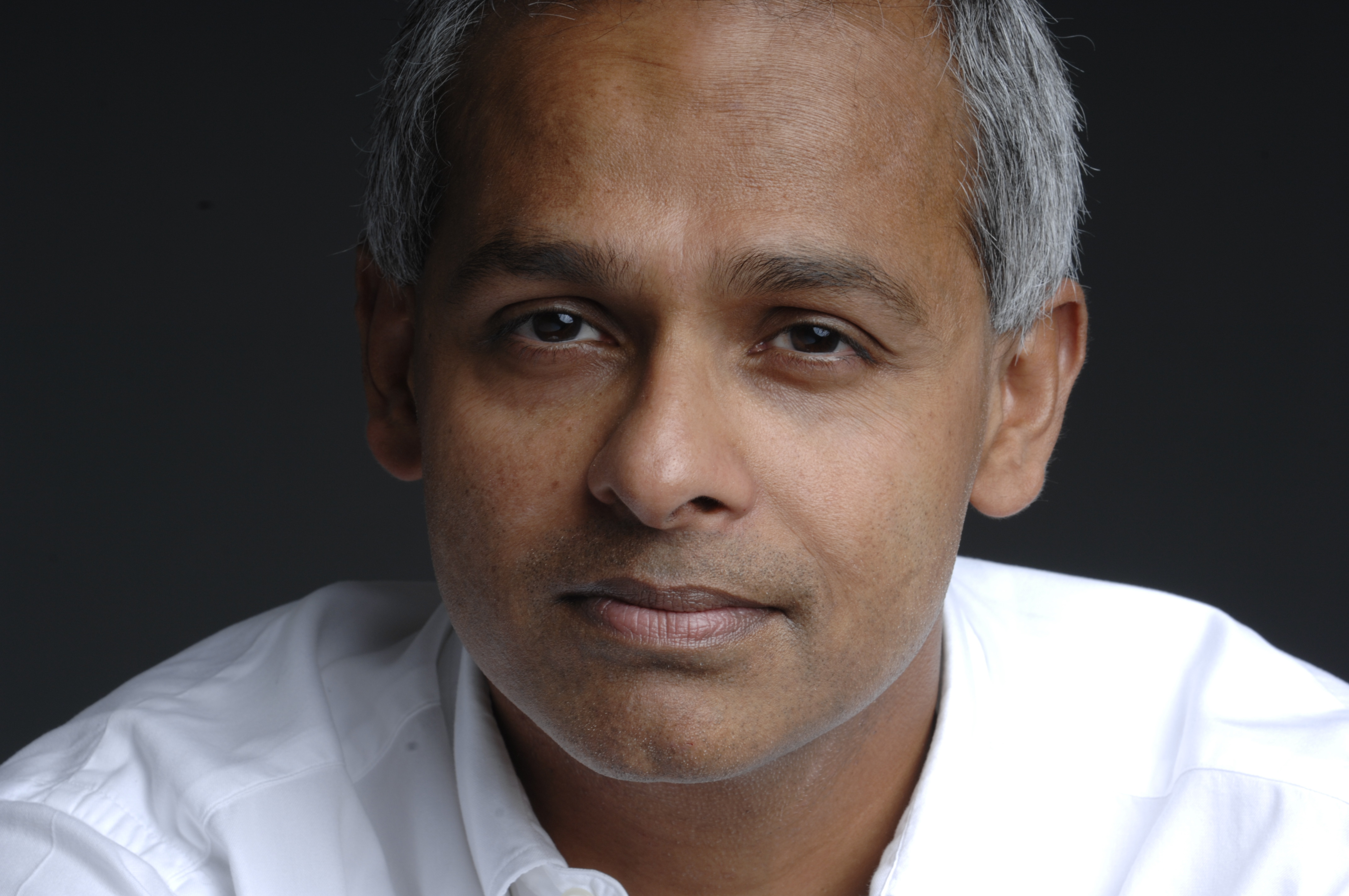Dear Reader
This is the third and the concluding part of the interview with economic commentator and globally bestselling author Satyajit Das.
Das is an internationally respected commentator on financial markets and economics He is credited with predicting the current financial crisis. He has also featured 2010 Oscar-winning documentary Inside Job.
In this interview I speak to Das around his new book The Age of Stagnation—Why Perpetual Growth is Unattainable and the Global Economy is in Peril. Like his earlier books, Traders, Guns and Money and Extreme Money, this book is also a terrific read and a must for anyone who seriously wants to understand how things haven’t really changed in the aftermath of the financial crisis, and why the future continues to remain bleak.
In the third and the final part of this interview, Das talks about China and tells us what is really happening in there. He also tells us that “No one wants to believe that stagnation or collapse are the only two likely options”.
Happy Reading!
Vivek Kaul
On page 65 of your new book The Age of Stagnation you write: “Half of the investment in China since 2009 has been ineffective”. What makes you say that?
China’s growth especially after 2008/2009 was driven by a massive debt fund investment boom. A good proportion of this investment can be classified as ‘mal investment’; that is, revenues projects where revenues will be insufficient to cover the borrowing or generate adequate financial returns.
The bulk of investment has been by SOEs[state-owned enterprises] in government-backed infrastructure projects – the tiegongji (meaning “iron rooster”), a homonym for the Chinese words for rail, roads and airports. The Ministry for railways is planning investments of around $300 billion, adding 20,000 kilometres (“Kms”) of rail track to the existing network of 80,000 Kms. China’s rail network will become the second-longest in the world behind the US, overtaking India.
China is also having a love affair with the superfast train. Undeterred by accidents and the high cost, further expansion of the high speed rail network is under way. A new service between the southern cities of Guangzhou and Shenzhen travels at 380 kilometres per hour (KPH) nearly halving the travel time to 35 minutes. CSR Corp, China’s biggest train maker, has plans for a super train capable of 500 KPH.
What else is it doing?
China is constructing around 12,000 Kms of new expressways at a cost of over $100 billion. China road network of over 60,000 Kms of high-speed roads is only slightly less than the 75,000 Kms in the US. China is planning to expand the high-speed road network to 180,000 Kms even though China has only around 40 million passenger vehicles compared to 230 million in the US.
There is a spate of new airports and expansions of capacity at existing facilities. Jiaxing in eastern Zhejiang province is converting a military landing strip into a commercial airport at a cost of around $50 million. The town is only one hour’s drive on brand new expressways from three of China’s busiest international airports in Shanghai and Hangzhou. There are also plans for a high-speed rail line connecting Shanghai and Hangzhou.
In Hunan, local authorities tore down portions of a modern flyway and used the stimulus funding to rebuild it. Stories of ghost cities, such as the empty newly-built city of Ordos, Zhengzhou New District, Dantu and the orange area to the north-east of the Xinyang, abound. There are ghost shopping malls in many cities.
Could you tell us more?
Based on estimates from electricity meter readings, there are more than 60 million empty apartments and houses in urban areas of China. Many of the properties were purchased by people speculating on rising property prices.
The projects have driven a sharp rise in demand for materials like steel and concrete. China now produces more steel than the next eight largest producers combined. China now produces more cement than the rest of the world. But this over-investment in non-productive, low return projects will ultimately reduce growth.
For the rest of the world, the investment boom fed demand for commodities and machinery in the short run. Ultimately, it will create problems in two ways: firstly, many companies globally have over-invested in capacity based on anticipated Chinese demand that may not eventuate; and second, dumping of Chinese overcapacity on global markets will feed disinflationary pressures.
In your chapter on Brics you write that it would take decades for China to absorb the excess capacity that it has created over the years. Can you elaborate a little on that?
Sino-philes attribute the excess capacity to the collapse of global demand. They assume that global demand will rebound strongly increasing the returns from these investments.
Sino-philes also argue that the investments in infrastructure will produce long term economic benefits and returns from increased productivity. They point to the fact that few investment programs of social infrastructure are profitable. They point to the mid-19th century boom in investment in railways in Western countries, which generated economic benefits, but few made an adequate financial return with many going bankrupt. They also argue that China lacks necessary infrastructure.
So what is the real issue?
The real issue is whether the specific projects are appropriate. China has six of the world’s ten longest bridges and the world’s fastest train. But 40% of villages lack paved road providing access to the nearest market town. High-speed rail lines in China may increase social return, improving the quality of life for the average Chinese if they are wealthy enough to afford to use them. But the financial return on capital invested in these projects will be low.
While many of these large projects are appealing to politicians and demagogues proclaiming superiority of Chinese technical proficiency, investment in improving ordinary train lines, rural roads, safety and more flexible pricing structures may have yielded higher economic benefits.
There are several concerns now about this economic model.
And which are?
First, analysts, such as Pivot Capital Management, argue that the efficiency of Chinese investment has fallen. One measure is the incremental capital-output ratio (“ICOR”), calculated as annual investment divided by the annual increase in GDP. China’s ICOR has more than doubled since the 1980s and 1990s, reflecting the marginal nature of new investment. Harvard University’s Dwight Perkins of Harvard argues that China’s ICOR rose from 3.7 in the 1990s to 4.25 in the 2000s. Other researchers suggest that it now takes around $6-8 of debt to create $1 of Chinese GDP, up from around $1-2 around 20 years ago. In the US, it took $4-5 debt to create $1 of GDP just before the GFC. This is consistent with declining investment returns.
Second, increased level of debt and the often uneconomic projects financed has led to increasing concern as to whether the debt can be serviced.
How much is that an issue?
A 2012 Bank of International Settlements (“BIS”) research paper on national debt servicing ratios (“DSR”) found that a measure above 20-25% frequently indicated heightened risk of a financial crisis. Analysts estimate that China’s DSR may be around 30% of GDP (around 11% goes to interest payment and the rest to repaying principal), which is dangerously high.
The debt problems are compounded by other factors. A large portion of the debt is secured over land and property, whose values are dependent on the continued supply of credit and strong economic growth.
A high proportion of debt is short term, with around 50% of loans being for 1 year, requiring refinancing at the start of each year. As few Chinese borrowers have sufficient operating cash flow to repay loans, new borrowings are needed to service old ones.
Around one-third of new debt is used to repay or extend the maturity of existing debt. With a significant proportion of new debt needed to merely repay existing debt the amount of borrowing needs to constantly increase to maintain economic growth.
China observers now worry about whether the high absolute levels of debt, rapid increases in borrowing, increasing credit intensity, servicing problems and the quality or value of underlying collateral are likely to result in a financial and economic crisis – a Minsky Moment.
On slightly different note what do you see the impact of the depreciation of the Chinese yuan on global growth?
Most nations now have adopted a similar set of policies to deal with problems of low economic growth, unemployment and overhangs of high levels of government and consumer debt. In a shift to economic isolationism, all nations want to maximise their share of limited economic growth and shift the burden of financial adjustment onto others. Manipulation of currencies as well as overt and covert trade restrictions, procurement policies favouring national suppliers, preferential financing and industry assistance policies are part of this process.
A weaker currency boosts exports, driven by cheaper prices. Stronger export led growth and lower unemployment assists in reducing trade and budget deficits.
With Europe and Japan still actively trying to weaken their currencies and the US owing its recovery in part to this policy, China will be forced to join the global currency wars.
And what are the Chinese hoping here?
First, they will be hoping that it will provide a needed boost to slowing growth through exports.
Second, it will help with the policy of internal rebalancing away from investment to consumption by offsetting the loss of competitiveness through higher wage costs.
But there are risks. Retaliation in the form of competitive QE programs and intervention is possible. In addition, China risks triggering higher inflation and also uncontrolled capital flight which would expose its financial system vulnerabilities. The country’s foreign currency reserves (already down some US$700 billion to around US$3,300 billion) would fall sharply, reducing its financial flexibility.
You seem to remain unconvinced about the world having come out of the aftermath of the financial crisis and you write that a risk of a sudden collapse is ever-present. Why do you say that?
There are three possible scenarios.
In the first, the strategies in place lead to a strong recovery. The US leads the way. Europe improves as the required internal transfers and rebalancing takes place with Germany accepting debt mutualisation to preserve the Euro. Abe-nomics revives the Japanese economy. China makes a successful transition from debt financed investment to consumption. A financial crisis in China from the real-estate bubble, stock price falls and massive industrial overcapacity is avoided. Other emerging economies stabilise and recover as overdue structural reforms are made. Growth and rising inflation reduce the debt burden. Monetary policy is normalised gradually. Higher tax revenues improve government finances. There is even strong international policy co-ordination, avoiding destructive economic wars between nations.
Oh that is clearly a lot to expect…
Such an outcome is unlikely. The fact that current policies have not led to a recovery after 6 years suggests that they are ineffective.
The second scenario is a managed depression, a Japan like prolonged stagnation.
Economic growth remains weak and volatile. Inflation remains low. Debt levels continue to remain high or rise. The problems become chronic requiring constant intervention in the form of fiscal stimulus and accommodative monetary policy, low rates and periodic QE programs to avoid deterioration.
Financial repression becomes a constant with nations transferring wealth from savers to borrowers to manage the economy. Competition for growth and markets drives beggar-thy-neighbour policies, resulting in slowdowns in trade and capital movements.
Authorities may be able to use policy instruments to maintain an uneasy equilibrium for a period of time. But it will prove unsustainable in the long run. Ultimately, a major correction will become unavoidable, as confidence in policy makers ability to control the situation diminishes.
And what is the final scenario?
The final scenario is the mother of all crashes. Financial system failures occur as a significant number of sovereigns, corporate and households are unable to service their debt. Defaults trigger problems in the banking system which leads to a major liquidity contraction, which in turn feeds back into real economic activity. Falls in employment, consumption and investment drive a severe contraction. The problems are global with developed and emerging markets affected.
The downturn is exacerbated by the limited capacity of policy makers to respond. Weakened public finances and policy options (QE and low rates) exhausted in fighting the last crisis limit the ability of governments to respond to a new crisis. Emerging markets are now unlikely to be a source of demand due to their problems. Geo-political stresses are higher than in 2007/ 2008.
Unsurprisingly, no one wants to believe that the stagnation or collapse are the only two likely options. Hubris, as humorist PJ O’Rourke noted is one of the great renewable resources.
Concluded…
The column originally appeared on the Vivek Kaul Diary on January 29, 2016



